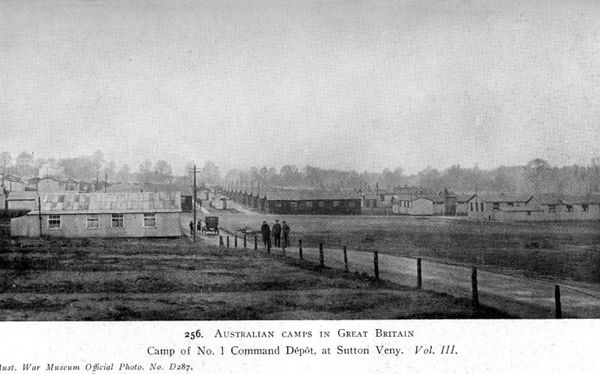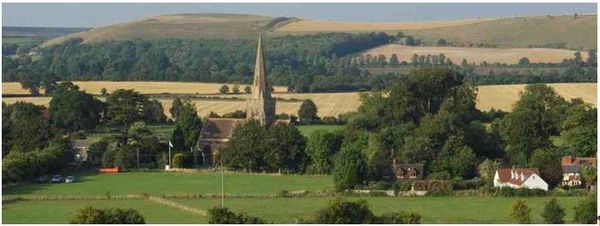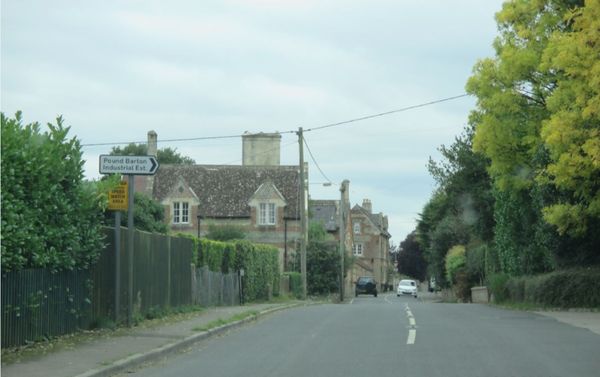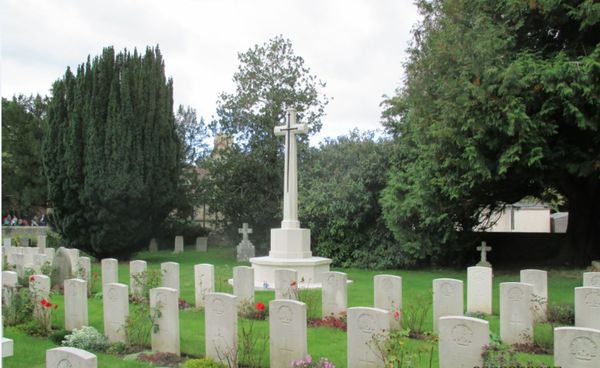Difference between revisions of "Sutton Veny"
From Our Contribution
(→Soldiers who passed this way) |
(→Soldiers who passed this way) |
||
| Line 57: | Line 57: | ||
*[[Walter Eugene Cockram]] 29 Mar - 31 May 1919 - No 1 Command Depot | *[[Walter Eugene Cockram]] 29 Mar - 31 May 1919 - No 1 Command Depot | ||
*[[Harry Douglas Butcher]] 31 May - 15 Aug 1919 | *[[Harry Douglas Butcher]] 31 May - 15 Aug 1919 | ||
| + | *[[]] 18 Jun - 17 Dec 1919 | ||
*[[Henry (Harry) Butcher]] 3 - 15 Jul 1919 | *[[Henry (Harry) Butcher]] 3 - 15 Jul 1919 | ||
Revision as of 21:42, 6 February 2019
 No 1 Command Depot Sutton Veny | |
 Sutton Veny village | |
Remarks
The proximity of Sutton Veny to Warminster and Salisbury Plain ensured that Sutton Veny and the surrounding villages in the upper Wylye Valley area, was an ideal location to barrack troops in order for them to train prior to deploying to northern France. Supplies arrived via the Salisbury to Warminster railway line, and in November 1914 a railway spur from Heytesbury was laid the few miles to Sutton Veny to convey camp building materials and water for the troops.
Approximately 10 camps were built around Sutton Veny and the first of more than 10,000 troops belonging to the British 26th and 34th Divisions started to arrive in April 1915 to commence their training. Those soldiers arrived direct from their homes on call up.
On both sides of the Norton road from Leys lane were trenches, and troops would live in them for a week at a time with food being brought out as would occur in the war zone. The impact of these troops on village life was enormous, and both sides realised they had to get on together. Village women took in soldier's laundry, and several snack shops and tea huts were built for the mutual benefit of both parties.
Sutton Veny consisted of a number (10) of individual camps including a hospital adjacent to the most northerly of the camps. The main camps were in Sutton Veny and Codford; 2 villages separated by only a few miles. One of those camps was known as Sand Hill camp near Longbridge Deverill, built in 1914 to accommodate infantry units, and taken over by the Australians in October 1917 to be their Overseas Training Brigade's base which had relocated from Perham Downs. Earlier, in December 1916 the No 1 Australian Command Depot had moved to Sutton Veny where it remained until 1919. After the Armistice, No 1 Australian General Hospital was transferred to Sutton Veny where it remained until the end of 1919.
Relaxation for the troops consisted of two village pubs (The Wool Pack and The Bell), the YMCA in Greenhill House ( now known as Sutton Veny House), three cinemas (one privately owned one in Dymocks lane, and two Army cinemas, one in the quarry near the junction of Five Ash lane and the Deverill road, and the other in Five Ash lane.
At the time Greenhill House was "situated in the midst of the largest Australian Imperial Force training and convalescent depots in Great Britain. This mansion, consisting over 50 rooms and with spacious lawns and grounds offered ideal possibilities for rest and recuperation for war weary troops."
In late 1918 and 1919 Spanish Influenza was particularly virulent and many Australian died. The names of 142 Australians and 2 Sisters are recorded in the Australian Chapel in St John's Church, and they are interred in the grave yard.
In 1919 as Sutton Veny began to return to normal the Australians formed an agricultural training depot at Sutton Veny in order to prepare and train soldiers for returning to civilian life. At the end of 1919 the Australian troops had all left for home, and the huts were demolished, the camp railway lifted, and the peace and tranquillity of village life returned.
Soldiers who passed this way
1917
- William James Allen 9 - ?? Dec 1917
- Arthur Percy Thomas Boyle 23 Dec 1917 - 10 Dec 1918
1918
- George Edward Binns 28 May 1918 - 26 Feb 1919 - No 1 Command Depot
- Robert Frank Bickford 7 - 31 Sep 1918 - No 1 Command Depot
1919
- Charles Henry Davis 16 Jan - 19 Dec 1919 - No 1 Command Depot
- Walter Eugene Cockram 29 Mar - 31 May 1919 - No 1 Command Depot
- Harry Douglas Butcher 31 May - 15 Aug 1919
- [[]] 18 Jun - 17 Dec 1919
- Henry (Harry) Butcher 3 - 15 Jul 1919
Notes

